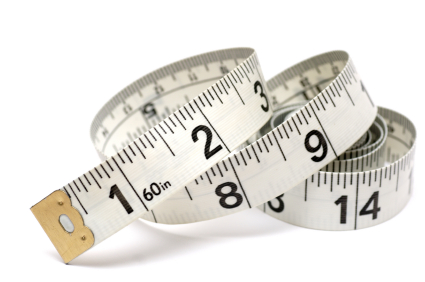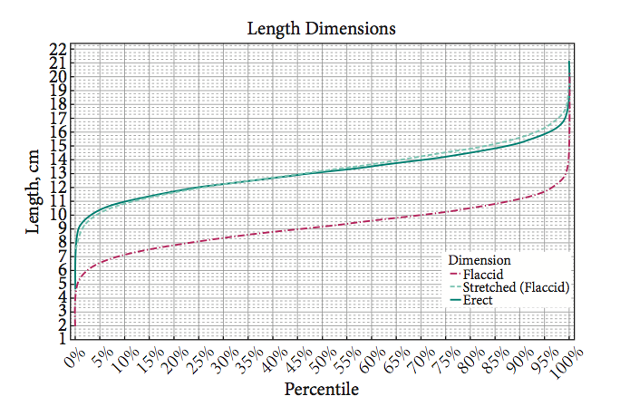
Sewing tape measure (Gika Rector)
Happy Friday! Men, I’m sure you’ve all worried about your size at some point, right? (No royal we here, since I’m not a man and therefore have never had this particular worry.) Depending on your mood today, you may or may not want to read on.
Scientists have (once again) figured out the average penis size. But this time, they’ve really got it down. (Some might say to a science.)
British researchers looked at a pretty comprehensive sample size of 15K+ men from the U.S., Asia, Europe and Africa. The men ranged in age from 17 to 91 years old, and most of them were from either Europe or the Middle East.
The results, published in the “British Journal of Urology” and fittingly titled “Am I Normal?,” found the following:
The mean length of a flaccid penis is 3.6 inches, and the mean length of an erection is 5.16 inches. An average guy’s erect circumference is 4.5 inches.
(How many dudes are frantically measuring right now?)
Here’s more reassurance, per The U.K.’s “The Guardian:”
In reality, only 2.28% of the male population have an abnormally small penis, said the study – and the same percentage an unusually large one.
Over 97% of men have an average-sized penis. This also means that we can assume a normal distribution (or bell curve) in terms of distribution.
Breathing easier now?
To find these numbers, the researchers examined variables from 20 previous studies on penises (culled down from 96 original studies) to construct a “nomogram,” a graphical representation that’s supposed to include all ages and races of men’s genitalia.
The study is the first of its kind to “combine all existing data on penis length and girth into a definitive graph.” It’ll be used by doctors to reassure men from size anxieties.
Here’s one of the graphs related to penile length:

Penile length graph (The Guardian)
However, the researchers have admitted there are some flaws to this study. One is that size differences between the races can’t be compared equally, because the sample sizes of each race were not equal themselves.
And then there’s this flaw:
They acknowledged their results may have been somewhat skewed by the possibility that men who volunteer to be examined may be more confident in their penis size than the general population.
But I’m sure that’s just part and parcel of the entire package (sorry, couldn’t resist). Either way, 97%+ of men can now rest easy.









